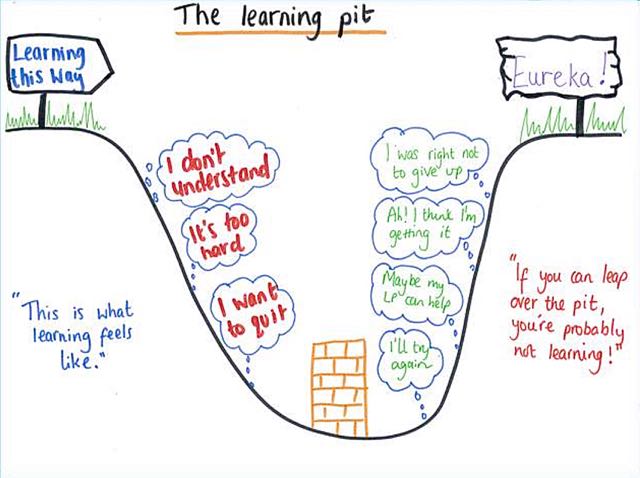
I remember my second year teaching. A teacher showed me the pacing guide for the curriculum and said, “If you just teach all the stuff in the color red, you will have covered all the 7th grade standards.” At this point in my teaching career, I had no teaching credential and I wasn’t very familiar with standards. I was relieved to have a cheat sheet to get me through. I knew what we would be doing each day. I had a plan. It went pretty well, but when I got to the end of the year, I thought, “Did my students actually learn anything?” I honestly had no idea.
Fast forward to my interview to work at Napa High. We were discussing how I would create lesson plans and implement them. One interview question I distinctly remember was, “What do you do for the students who don’t get it?” Pause. Silence. I was searching my brain for the right answer, but I had nothing. So, I replied, “I don’t know. Do you have people here who can teach me that?”
I got the job.
Sometimes we get so caught up in making sure we fill the minutes and days with activities, that we forget to make sure we know (and our students) know what they are actually learning.
Last year, I began to tweak my teaching practices by spending a lot more time in my planning process considering my exact learning objective for each lesson or lesson series, and then trying new ways of communicating that goal my students. With greater clarity came more focused lessons, higher student engagement, more actionable feedback on learning (not just completion of activities), and a stronger culture of learning in the classroom. It was not perfect, but it was better.
It’s a lot like the Visible Learner Protocol we have been using at our site.
- What are my students learning? This is not their current project, the driving question, the theme of the unit, or the graphic organizer they are filling out. These are the standards-based, measurable knowledge and skills I want them to learn.
- How do I know and how do they know when they have learned it? I want to break the learning up into discrete chunks at various depths of knowledge and provide clear feedback along the way, not just on the test or at the end of the unit. I want my students get frequent feedback on their progress toward the learning goals. Part of my job is to help students recognize the gap between what they already know and what I want them to learn. I want to offer sufficient scaffolds for students who are struggling and sufficient challenge for those who have enough proficiency to take the next steps in their learning.
- What do students do if they get stuck? What do I do as the teacher to support them through the learning process? This is where I am building student capacity for independence. How will I create and manage a classroom culture of learning and support, so that students have the skills to climb out of the learning pit? I want students to be focused on their mastery of the learning objective, not just completion of a series of assignments.
Part of what I learned at Napa High was that I could reteach material to students who didn’t get it the first time. This was not the “work completion” model I had previously been using. My focus slowly shifted from making sure all the students did all the work to making sure all students reached the learning target or objective. I believe that shift has helped me become a stronger teacher and I am grateful for the teachers who showed me the way.